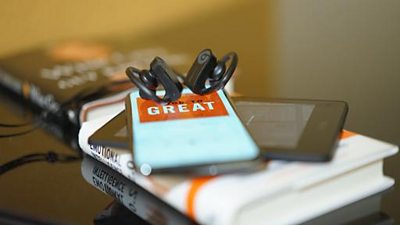
Welcome to the first edition of the ±«Óãtv Audio Research Update. About once a month I would like to update you on our latest research and work in the ±«Óãtv R&D Audio Team. The main topic for this update is binaural audio. During October some initial results of our long term work on improved headphone experiences have been made available to ±«Óãtv audiences. All of them are still online and I would like to invite you to have a listen.
Binaural Audio
In order to evaluate how we can transform five-channel surround into a improved headphone experience beyond simple downmix we have developed a binaural post-processing system running in a web browser. You can experience the radio drama (previously produced in surround sound) in two versions for headphones and compare them to the normal downmix to conventional stereo. All the details can be found in . Following on from this, we also made a first attempt to directly produce an enhanced binaural experience in an episode of the radio drama. The technical background can be found in . I hope you will and tell us what you think using which also gives you a nice way of comparing specific scenes of the binaural version with the stereo version.
Audio Research Partnership
Last month we had the initial 'all-hands' meeting for the new project we are working on with Queen Mary University London, University of Nottingham and University of Oxford on . In this project we will address three hypotheses: (i) that Semantic Web technologies should be deployed throughout the content value chain from producer to consumer; (ii) that advanced signal processing should be employed in the content production phase to extract "pure" features of perceptual significance and represent these in standard vocabularies; (iii) that this combination of semantic technologies and content-derived metadata leads to advantages (and new products and services) at many points in the value chain, from recording studio to end-user (listener) devices and applications. The first all-hands meeting was great and we discussed several research demonstrators you will hopefully read more of here in the near future.
Meet the team
The team has been very active preparing various contributions to conferences and conventions. Andrew Mason has presented his work on personalised compression at during Radio Festival 2014 here in Salford. He was able to successfully show how the dynamic range and loudness of a programme can be automatically adapted to the noise in the listening environment using browser-based audio signal processing. We will publish more on this topic soon and I will provide you with more information as soon as it is available. The next event for the audio team will be the Tonmeistertagung (biannual conference of the Verband Deutscher Tonmeister (VDT) which is the German Association of Sound Engineers) for which I have organised a couple of regarding future audio formats. I would like to mention specifically the great project we are currently conducting with the and the (IRT) on an experimental object-based production.
And since this is the first of these monthly posts I would like to point you to the introduction to which we worked on with several other teams in ±«Óãtv R&D for this year's IBC in Amsterdam.
-

Immersive and Interactive Content section
IIC section is a group of around 25 researchers, investigating ways of capturing and creating new kinds of audio-visual content, with a particular focus on immersion and interactivity.
